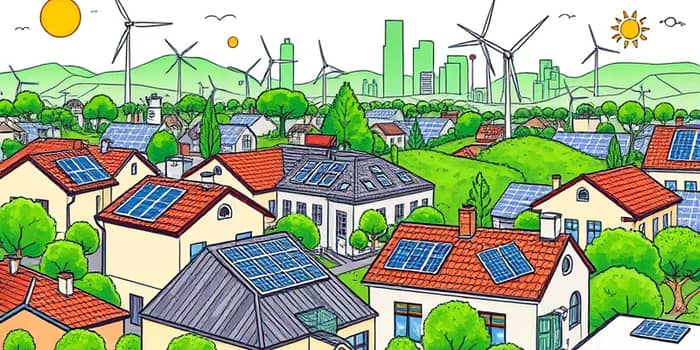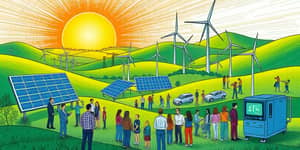
The energy industry stands at a crossroads, where traditional fossil-fuel models meet the unstoppable rise of renewables. Consumers and corporations alike are seeking cleaner, more cost-effective solutions. Retail energy providers are responding by blending established infrastructures with disruptive technologies, forging new pathways to deliver power. From deregulated markets in Texas and Europe to emerging economies in Asia, the future of retail energy is being rewritten. This article delves into the mechanisms, trends, and opportunities that define electrification and widespread digitization, illuminating how they combine to reshape global electricity markets. By examining real-world case studies and innovative business models, we offer actionable insights for stakeholders ready to embrace the low-carbon transition.
Historically, retail energy markets revolved around vertically integrated utilities that generated, transmitted, and distributed electricity under regulated rates. Over the last two decades, deregulation and unbundling have allowed third-party retailers to enter competitive marketplaces. In regions like the United Kingdom, Australia, and parts of the United States, customers can now choose from dozens of providers offering diverse tariff structures and services. In Texas alone, residents select from over 100 retail electricity plans, comparing rates, contract lengths, and renewable content. This shift has driven innovation in pricing, customer engagement, and bundled offerings such as energy efficiency audits, smart thermostat rentals, and carbon offset bundles.
As digital platforms and smart meters proliferate, retailers leverage advanced analytics and real-time consumption data to develop dynamic offerings. Subscription-based models, time-of-use pricing, and demand response programs incentivize consumers to shift loads during off-peak hours, balancing the grid and reducing costs. Some emerging startups offer energy credit wallets, where customers accumulate tokens by reducing peak usage and can redeem them for bill credits or partner rewards. With customer engagement through dynamic pricing as a strategic priority, energy companies are transforming passive customers into active participants, fostering a two-way energy ecosystem and paving the way for peer-to-peer energy trading networks.
One of the most powerful drivers of change is the transition to decentralised renewable generation. The dominance of solar energy markets is expected to meet nearly half of global electricity demand growth by 2025, fueled by record-low module prices and supportive policies. Solar photovoltaic (PV) costs have plummeted by over 85% since 2010, while onshore wind costs have dropped by nearly 60%. In key markets across Asia, Latin America, and Africa, solar installations are providing electricity to remote communities, accelerating rural development and energy access. The solar sector now employs over 4 million people globally, highlighting its role as a job creator and economic driver.
Wind power growth remains robust, with annual capacity additions exceeding 90 gigawatts in 2023. Offshore wind projects are gaining momentum in Europe, East Asia, and the U.S. where recent lease auctions attracted bids totaling over $40 billion. Corporate power purchase agreements (PPAs) continue to surge, with over 40 GW of signed deals in 2022 alone. These commitments showcase the rapidly expanding clean energy capacity that underpins the green transition. Paired with battery storage advancements, renewable assets are increasingly capable of providing reliable, dispatchable power, smoothing intermittency and enhancing grid resilience.
Consumers today are no longer passive recipients of electricity. With rooftop panels, home batteries, and electric vehicles, they can generate, store, and even sell power back to the grid. Advanced aggregator platforms enable the creation of virtual power plants, where distributed assets participate in wholesale markets. Startups in California and Australia are offering peer-to-peer energy trading, letting neighbors buy surplus power directly at competitive rates. This empowering consumers to monetize assets democratizes energy and creates new revenue streams for households and businesses, while contributing to greater grid stability.
The fusion of technology and clean power is accelerating progress. advancements in cleantech manufacturing have improved panel efficiencies and slashed production costs. Meanwhile, AI-driven carbon management solutions analyze emissions patterns in real time, optimizing operations across grids and facilities. Blockchain applications are enhancing transparency in renewable certificate trading, ensuring authenticity and traceability. Meanwhile, microgrid deployments, bolstered by IoT sensors and edge computing, are enabling resilient, off-grid communities and critical infrastructure backups in disaster-prone regions.
Policy frameworks remain vital to sustain growth. In the United States, the Inflation Reduction Act has unlocked over $370 billion in clean energy tax credits, driving unprecedented activity in solar, wind, and hydrogen projects. Across the Atlantic, the EU’s RePowerEU plan allocates €300 billion for renewable deployment, energy efficiency, and infrastructure upgrades by 2027. In Asia Pacific, China’s 14th Five-Year Plan earmarks massive investments in ultra-high-voltage grids and offshore wind farms. Such measures are catalysts for innovation, lowering costs, stimulating manufacturing growth, and securing supply chains.
From venture capital backing early-stage cleantech startups to corporate power purchase agreements (PPAs) exceeding $100 billion annually, private investors are fueling diversification. Green bonds and sustainability-linked loans have reached record issuance, with over $500 billion in green debt instruments issued in 2023 alone. Many companies deploy flexible renewable procurement strategies—blending spot-market purchases, long-term contracts, and certificate trading—to optimize costs and reduce emission footprints. Stakeholders must navigate evolving regulations, carbon pricing, and potential border adjustment mechanisms, while ensuring robust ESG reporting for investor confidence.
As retail energy transforms under the pressure of sustainability goals and technological change, industry leaders must act decisively. The following strategic imperatives will help organizations not only adapt but thrive in the evolving landscape:
The diversification of retail energy markets through renewable options is more than a trend; it is a profound shift toward resilience and sustainability. By embracing digital platforms, empowering end users, and investing in clean technologies, retailers can deliver value and purpose. Collaboration across utilities, regulators, technology providers, and communities will be essential to overcome challenges and scale solutions. This journey requires bold vision, agile execution, and an unwavering commitment to a low-carbon future. As we move forward, the choices made today will define energy access, economic growth, and climate outcomes for generations. Together, we can illuminate a path where renewable energy certificate markets and consumer innovation drive a brighter tomorrow.
References













